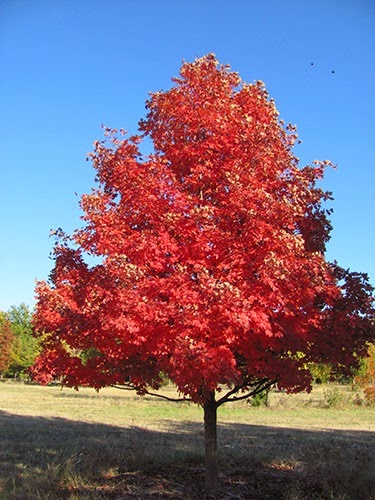What had caused the white heads in the wheat?
Well, they say wheat has “nine lives”, it seems like it has used up all of them, but it still seems to be hanging on! I have looked at several fields in north central Kansas and the Post Rock Extension District. For the most part, the northern part of the district has seemed to escape the extensive damage from the freezing temperatures the end of April. However, the southern part of our Post Rock Extension District, in Lincoln, Mitchell, and southern Osborne, are not so lucky. At our recent Post Rock Extension District Wheat Plot Tour, there was more freeze injury found in the southern counties mentioned above. White heads in wheat is an indication of several different things and have started to show up more around north central Kansas. Sometimes the white heads are just single tillers scattered throughout part or all of a field, and sometimes they occur in small to large patches. Heads might be completely white starting from the stem, or may just have a few florets showing the discoloration.
There are many causes of white heads. Here are some of the most common causes and their diagnosis.
- Freeze injury to stem, crown or head. Depending on the stage of growth at the time of a late spring freeze, parts or all of the heads may die and turn white. In years when the freeze occurs about the boot stage or a little earlier, there can be injury to the lower stem, which then cuts off water and nutrients to the developing head. In years when the wheat is in the early heading stage at the time of the freeze, the freeze can damage the heads directly. Often, wheat on north-facing slopes, on ridge tops, or in low-lying areas will be most affected by freeze injury. But freeze injury can also be so severe that it occurs throughout the fields, in no particular pattern.
I have also seen in some fields that the head still appears to be a green color (lighter colored) but has no developing grain. Crown rot is another potential problem that can be traced back to freeze injury. When the crown is damaged by cold temperatures or a freeze, part or all of the tillers can die. If the tiller from a damaged crown forms a head, this head will almost always be white. The crown will have internal browning, and stands will usually be thinner than normal.
Hail Damaged Wheat
- Hail. Hail can occasionally damage just a portion of a head, and cause that damaged portion to turn white. The hail impact to the heads may also remove spikelets and expose the rachis.
- Head scab. When there are periods of rainy weather while the wheat is flowering, as seen across most of Kansas this growing season, some heads may become infected with Fusarium head blight (Head Scab) and turns white. The heads of some red-chaffed varieties turn a darker red when infected with scab, but the heads of most varieties turn white. Symptoms can be restricted to one or few spikelets in the head, but often times the upper half or the entire head might be affected. Head scab is most common where wheat is grown after corn, or after a wheat crop that had head scab the previous year. Head scab can be identified by looking for pink spores of the Fusarium fungi, as well as by a darker discoloration to the rachis of the wheat head. During the current growing season, head scab has being observed in south-central and southeast Kansas, but it is probably still early to see symptoms in central and north-central Kansas as it takes approximately three weeks from flowering for the first symptoms to appear.
 |
| Head Scab |
- Take-all. This disease often causes patches of white heads scattered throughout the field. It occurs most frequently in continuous wheat, and where there is a moderate to high level of surface residue. Take-all is also favored by high pH soils, so a recently limed field might also show symptoms. To diagnose take-all, pull up a plant and scrape back the leaf sheaths at the base of a tiller. If the base of the tiller is shiny and either black or dark brown, it is take-all. All tillers on a plant infected with take-all will have white heads. Plants will pull up easily.
- Sharp eyespot. This disease is common in Kansas, but rarely causes significant yield loss. Sharp eyespot causes lesions with light tan centers and dark brown margins on the lower stems. The ends of the lesions are typically pointed. If the stems are girdled by the fungus, the tiller may be stunted with a white head. Each tiller on a plant may be affected differently.
 |
| Wheat Stem Maggot |
- Wheat stem maggot. Wheat stem maggot damage is common every year in Kansas, but rarely results in significant yield loss. It usually causes a single white head on a tiller, scattered more or less randomly through part or all of a field. One typical symptom of white heads caused by wheat stem maggot is that the flag leaf and lower stem are often green, and only the last internode (peduncle) and head are white. If you can grab the head, the stem pulls up easily just above the uppermost node, the tiller has probably been infested with wheat stem maggot. There will be chewing at the end of the stem that was pulled out.
For further information on disease management in your wheat or with wheat productions, contact me at any Post Rock Extension District Office in Beloit, Lincoln, Mankato, Osborne or Smith Center.







